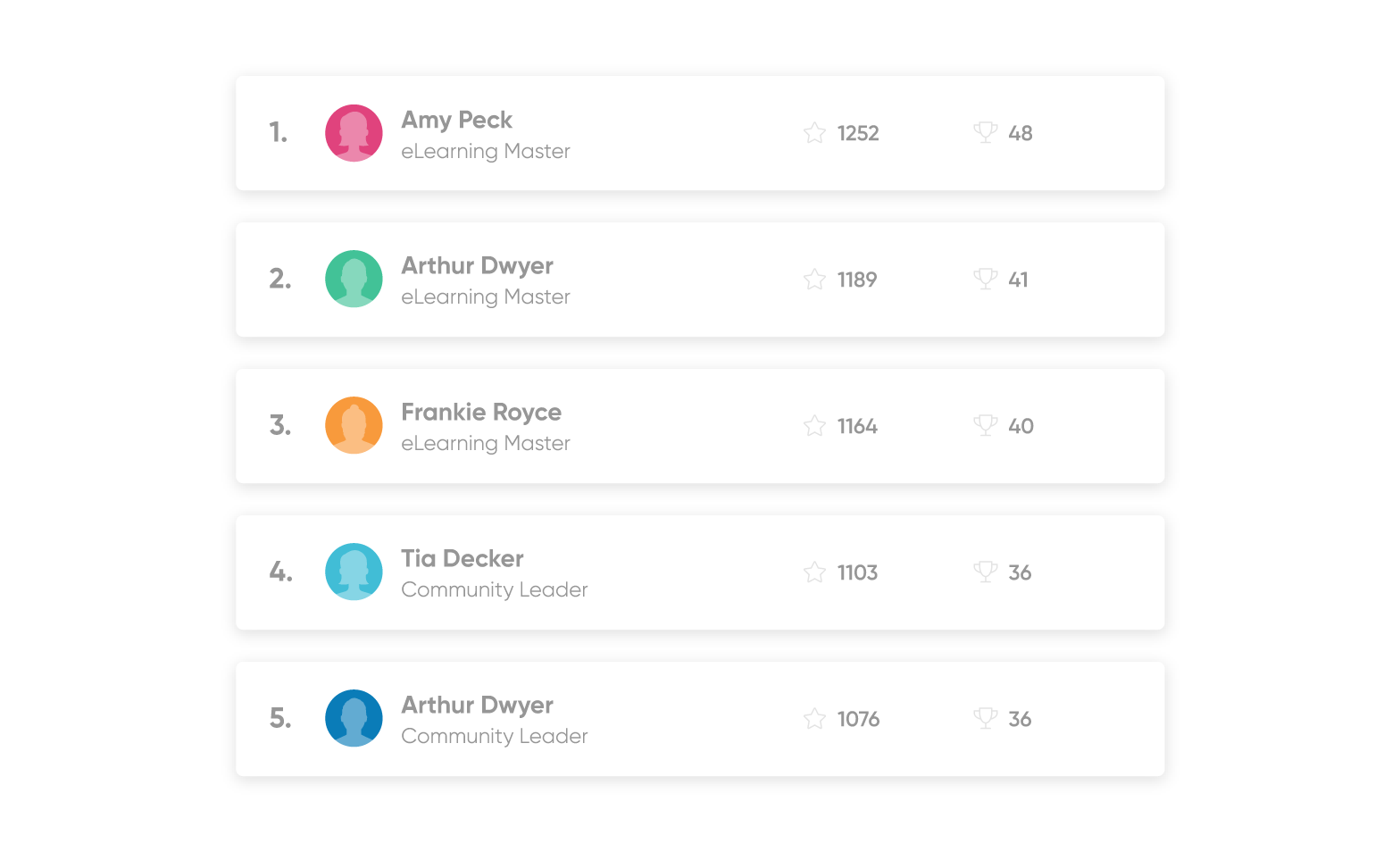
5 min reading time
6 Strategies to Improve Learning Retention in Corporate Training
When planning corporate training, there’s a lot of metrics to consider. But one of the most important, and often overlooked, is learning retention. The ultimate aim of delivering training is to instill knowledge that your audience can put into action, so if it’s quickly forgotten, then it’s not going to meet your learning objectives.
The truth is that the human brain forgets things very quickly – just look at the Ebbinghaus forgetting curve. Only a small portion of what we learn is stored in our long-term memory; so how do we ensure that learners retain the most important elements of their training?
The trick is to use a mix of training methods, and your LMS’s features, to keep your learners’ motivation levels high and ensure that course content transforms from information to long-term knowledge.
6 tactics to improve learning retention
1. Create engaging content
Your learners relate to different types of content in different ways; some like to watch a video, some prefer to listen to audio recordings, while others like to take lots of notes. So, with this in mind, how do we make learning more sticky?
Many educational psychologists believe that the key to making training more understandable and memorable is to provide a variety of content. Therefore, when creating a training session, keep it engaging by incorporating different types of content.
For example, you might start the session by showing a short, relevant video, then explain a concept that relates to it verbally, and then ask your learners to note down their own thoughts on the topic. You might also provide a list with additional reading or great podcasts on the topic so learners have the opportunity to go and find out more.
If you’re delivering training through an LMS, make sure you’re using a solution that enables you to mix and match content formats. Also, if you’re short on resources, don’t be afraid to take advantage of content creators outside of your organization. Add YouTube videos, reading materials, podcasts and more resources from trusted resources, or repurpose the content you already have.
2. Incorporating blended learning
Blended learning offers the best of both worlds. It’s training that’s delivered in part through an LMS and in part through face-to-face training, webinars, ILTs or other forms of live participation-based sessions. Blended learning works because it combines the convenience and measurability of an LMS with the personal touch that can really help training hit home. It’s also an extension of the previous point as you’re creating a more dynamic learning experience.
With blended learning, you can run in-person or webinar sessions on significant topics. Then you can create an online course in the LMS that reiterates the learnings from this session so that your learners can cover the material as many times as they want until they feel they truly understand it. And if you recorded the in-person or webinar session you can feature this in your online course. This repetition of information increases the likelihood that your audience will retain what is being taught.
To top it off, the live element then allows learners the opportunity to interact directly with a subject matter expert, asking them questions and offering their own views in Q&A sessions. It humanizes the training experience, allows colleagues to build relationships with each other, and further instills the knowledge the learner has gained.
3. Assessments
Regular assessments are one of the most effective ways to demonstrate retention. They reiterate critical points and refresh your learners’ memories.
For example, when new data protection regulations known as GDPR came into effect last year, many companies invested significant time and energy into ensuring their employees understood the new laws. But how many would pass the test again a year later?

For some types of training, ongoing or annual assessments are a necessary step to ensure important information isn’t forgotten over time. From multiple choice to true or false, you can easily create a follow-up assessment for your learners in your LMS to help clarify and reiterate learning.
4. “What’s in it for me?”
No matter your audience – employees, partners, or customers – learners want to know that when they take time out of their day to train that it’s worth their time. It’s up to you to reinforce the value of the training for your learners to keep motivation high and help them understand why they need to retain the information in the long-term.
Ask yourself: What is the main thing your learners will walk away with from this training? Are they mastering an important new piece of software? Is it a skill that they can put to use straight away? Will their participation in the training make them a more attractive candidate for promotion? And tell your learners this.
When learners can see the benefits and practical application of their training, they are more likely to pay close attention and retain what they’ve learned.
5. Gamify to motivate
Since motivation to learn is one of the biggest contributors to learning retention, it’s important to make completing learning as motivating as possible. Gamification is a great way to achieve this.

Within your LMS, you can incorporate gamified elements to your training programs. This means letting learners collect points for different achievements that are reflected on a leaderboard, earn badges, and level up when they’ve completed a certain amount of courses or learned a new skill.
6. Get people in groups
Facilitating group discussions is a powerful way to get learners engaged and reiterate essential points. When managing corporate learning, you’ve got lots of options for group learning:
- Create a forum in your LMS where your learners can ask questions, offer each other support, generate ideas, express their opinions, and exchange views. Lively discussions on training topics will be memorable to many, and help to reinforce the points you’ve made.

- Group projects are another great way to encourage learner engagement. When your learners are relying on each other to complete different parts of the project, it brings a new and more personal level of accountability into play. Encourage your learners to be a part of the learning community, and to be open to all kinds of ideas – your learning environment should be safe space where learners can share their thoughts.
Social Learning Theory suggests we model ourselves on the behavior of others – we watch how they learn and attempt to replicate it. It’s more of a challenge to incorporate this into an eLearning environment, but by incorporating group discussion and projects, you give learners the opportunity to learn from each other. Deciding on a corporate learning theory can also play a crucial part in long term success.
How do you ensure that learning retention is high when you deliver training? What tips work best for you?



